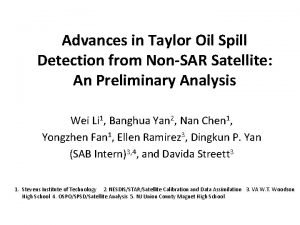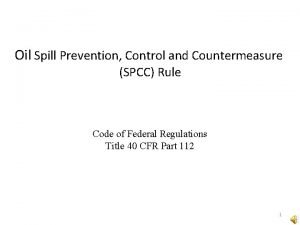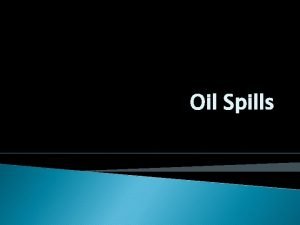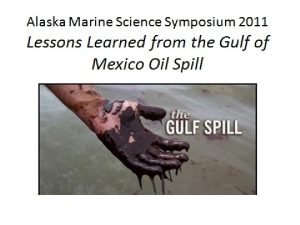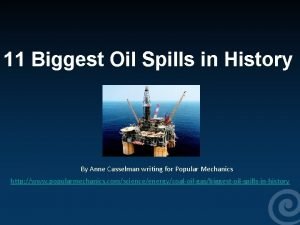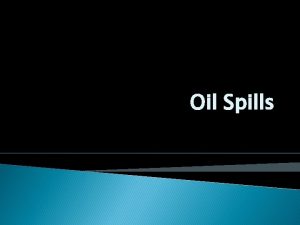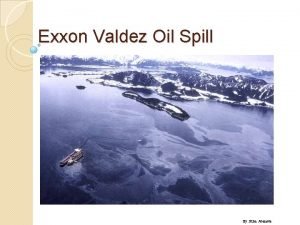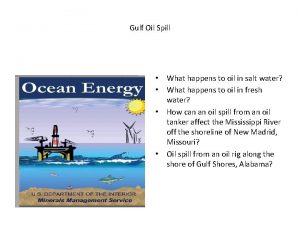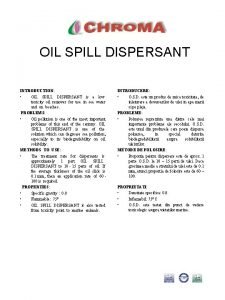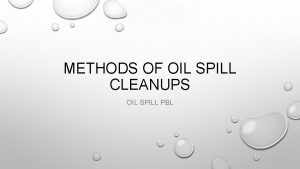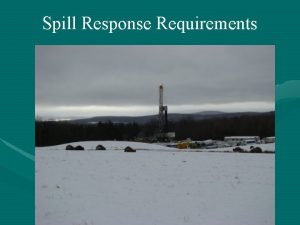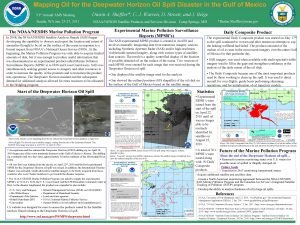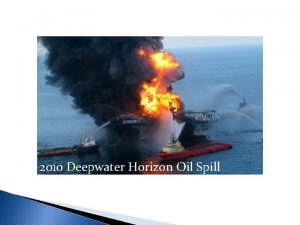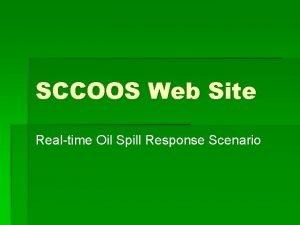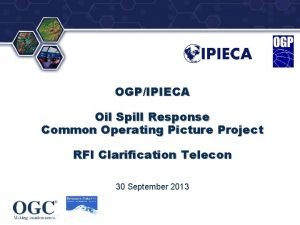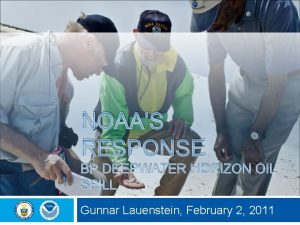Advances in Treating Agents for Oil Spill Response














- Slides: 14

Advances in Treating Agents for Oil Spill Response with Applicability to the Arctic Amy Tidwell & Tim Nedwed, Exxon. Mobil Upstream Research Company Ian Buist & Randy Belore, SL Ross Environmental Research, Ltd. Gerald Canevari, Canevari & Associates 2012 United States-Canada Northern Oil and Gas Research Forum Anchorage, Alaska November 13 -15, 2012

Outline • The OSR Toolbox • Dispersants − Background − Development of New Dispersant • In situ Burning − Background − Development of Herding Agents • Commercialization Plans • Summary

Spill Response Options: The Toolbox Mechanical Recovery: Booms & Skimmers Monitor & Evaluate In-Situ Burning The goal is to design a response strategy based on Net Environmental Benefit Analysis Dispersants

Background on Dispersants: What are they? • Dispersants are solutions of surfactants dissolved in a solvent • Surfactants reduce oil-water interfacial tension – allows slicks to disperse into very small droplets with minimal wave energy • Dispersed oil rapidly dilutes to concentrations <10 ppm within minutes, <1 ppm within hours, ppb range within a day

Background on Dispersants: What are they? • Oil-degrading micro-organisms are present everywhere • Each dispersed oil droplet is a concentrated food source that is rapidly colonized and degraded by marine bacteria • Rapid dilution allows biodegradation to occur without nutrient or oxygen limitations • Rapid dilution reduces toxicity issues – dispersed oil plume dilutes to <1 ppm in hours and <1 ppb within 1 – 2 days Graphic consistent with Venosa & Holder, EPA 2007

Development of New Dispersant Gel • Consistency of warm honey • Positively buoyant drops • Cohesive & persistent • Oleophilic behavior • 85+% active ingredient 9500 Pour Video Gel Pour Video Properties of Dispersants Used in Testing Dispersant Viscosity (15 C) Viscosity (c. P) Shear Rate (s-1) Density @ 20 C (g/cc) Corexit 9500 107 100 0. 968 New dispersant 1500 10 0. 921 Dispersant

Development of New Dispersant: Testing Dispersant-effectiveness results for light, medium, & heavy crude oils

Background on in situ Burning • • Controlled burning of oil “in situ” Conventional process requires booms to keep oil thick Fire resistant booms are a challenge to transport Only operational use offshore during Deepwater Horizon Newfoundland Offshore Burn Experiment, 1993

Background on in situ Burning: Herding Agents • Herders enable in situ burning without booms • Requires application of small volume of surfactant on water surface on perimeter of slick • Herding process requires minutes to thicken slick enough to burn • Herder application and burn initiated quickly from a single helicopter Lab-scale application of herders

Development of Herders: Recent Testing • Herder testing since 2004 focused on supporting in situ burning in ice • Recent field tests were done in very limited ice supporting use of herders in open water Field testing of herding agents, 2008

Commercialization Efforts: New Dispersant and Herders • Dispersant gel − Plans are for dispersant gel to be available for sale by early 2013 • Herding agents − Currently listed with US EPA for potential use in US marine waters − Commercially available through Applied Fabrics, Buffalo, New York − Helicopter delivery system under final development

Summary and Conclusions • Two new treating agent technologies – new dispersant and herding agents – have been developed which could enhance oil spill response capabilities • New dispersant − Treated light-to-medium oils with 2/3 less dispersant than a currently available product − Dispersed viscous oils that were previously considered undispersible • Herding Agents − Potential to enable in situ burning in both ice conditions and open water without the need for fire-resistant booms − May turn an infrequently used response option into a readily available tool because it can be applied rapidly from helicopters

Slide 13 Questions

Background on Dispersants Enhance Removal of Oil from the Environment Through Biodegradation
